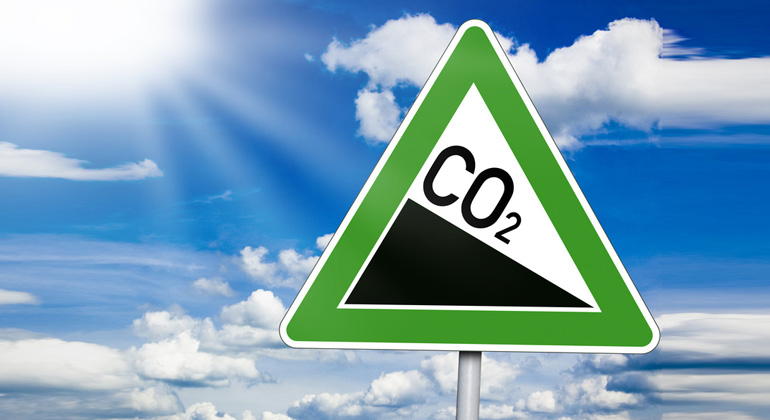Emissions trading: 2014 data shows emissions reduction
Emissions of greenhouse gases from installations participating in the EU Emissions Trading System (EU ETS) are estimated to have decreased by about 4.5% last year, according to the information recorded in the Union Registry.
European Commissioner responsible for Climate Action and Energy, Miguel Arias Cañete said: “Even while our economies are getting back in the growth track, emissions continue to decrease. This once again shows that economic growth and climate protection can go hand in hand. This sends a powerful signal ahead of the new global climate deal to be agreed in Paris this December: carbon markets deliver cost-effective reductions. At the same time, the recession continues to have a lasting impact on our carbon market. I therefore warmly welcome the ambitious political deal on the Market Stability Reserve agreed by the Parliament and the Council very recently.”
2014 emissions decrease
The EU ETS covers more than 11 000 power plants and manufacturing installations in the 28 EU Member States, Iceland, Norway and Liechtenstein, as well as emissions from airlines flying between European airports.
Verified emissions of greenhouse gases from stationary installations amounted to 1,812 million tonnes of CO2-equivalent in 2014. These emissions were about 4.5% below the 2013 level[1].
Back-loading stabilises surplus
The cumulative surplus in emission allowances has been slightly reduced from around 2.1 billion to some 2.07 billion for the 2014 compliance year. In 2014 auction volumes were reduced by 400 million allowances due to the start of the implementation of the back-loading[2] measure, which postpones the auctioning of these allowances. The 2014 cumulative surplus figure takes into account the exchange of international credits into allowances, sales of phase 3 allowances that generated funds for the NER300 programme which supports innovative low-carbon technologies, allowances allocated for 2014 and the auctioning of phase 3 allowances in 2014 (including aviation allowances).
High level of compliance
Companies’ level of compliance with the EU ETS rules was again high. Less than 1% of the installations which reported emissions for 2014 did not surrender allowances covering all their emissions by the deadline of 30 April 2015. These installations are typically small and together account for less than 0.5% of emissions covered by the EU ETS. A small number of installations − accounting for less than 0.2% of emissions in the previous year − did not report their 2014 emissions by 30 April 2015 according to registry data.
Airlines report 2013 and 2014 emissions
According to the EU ETS Directive, for the period 2013-2016, all commercial and non-commercial aircraft operators with significant emissions[3] are responsible for their emissions from flights within the European Economic Area (EEA)[4]. Airlines that operated intra-European activities covered by the Directive during 2013 and 2014 were required to report emissions for both years, and surrender corresponding allowances by 30 April 2015. Verified CO2 emissions from aviation activities carried out between airports located in the EEA amounted to 54.9 million tonnes of CO2 in 2014, an increase of 2.8% compared to 53.4 million tonnes of CO2 in 2013.
The level of compliance with the EU ETS rules is high: aircraft operators responsible for 99 % of aviation emissions covered under the EU ETS comply. This includes more than 100 commercial aircraft operators based outside the EU, which operate flights within the EEA.
Exchanges of international credits
The total number of international credits exchanged into allowances since the exchange function became operational in March 2014 amounts to 388.44 million.
Of these, 195.91 million were Certified Emission Reductions (CERs) and 192.53 million were Emission Reduction Units (ERUs). The CERs and ERUs exchanged came from projects taking place in a limited number of countries, with almost 77% of CERs originating from China and almost 77% of ERUs exchanged coming from projects in Ukraine.
Since 31 March 2015, credits issued in respect of emission reductions occurring during the first commitment period of the Kyoto Protocol (so-called “CP1 credits”) can no longer be exchanged in the EU ETS. The total number of “CP1 credits” exchanged by 31 March 2015 was 386.06 million.
For full details, including the number and type of credits exchanged by 30 April 2015, by country of origin, project and commitment period[5], see the Annex.
Background
Under the EU ETS, installations are required to submit their verified emissions data for each year to Member State registries. For 2014, this data became publicly available on the European Union Transaction Log (EUTL) on 1 April 2015. The EUTL displays compliance data from 4 May 2015, with information on whether installations have complied with their obligation to surrender an amount of allowances equal to the last year’s verified emissions.
The third trading period of the EU ETS began on 1 January 2013 and runs for eight years until 31 December 2020. The legislation reforming the EU ETS, laying down revised rules until 2020 and beyond, was adopted as part of the EU climate and energy package on 23 April 2009 (seeIP/09/628).
In May 2015, the European Parliament and the Council reached a political agreement to establish a Market Stability Reserve in 2018 to address the surplus of emission allowances that has built up and improve the EU ETS’s resilience to shocks by adjusting thesupply of allowances to be auctioned (seeIP/14/54).
For more information:
- EU Transaction Log homepage: http://ec.europa.eu/environment/ets/
- Registries homepage of DG Climate Action on EUROPA
- Revised ETS and Frequently Asked Questions
- Aviation
………………………………………………………………………………………………………………………………………………………………………..
[1] Total emissions are compared for installations having reported emissions both in 2013 and 2014.
[2] http://ec.europa.eu/clima/policies/ets/reform/index_en.htm
[3] http://ec.europa.eu/clima/news/articles/news_2015021001_en.htm
[4] The limitation of the EU ETS to flights within the EEA between 2013 and 2016 was agreed in Regulation No.421/2014, pending the agreement to be reached in 2016 in ICAO on a single global market based measure, to be implemented from 2020.
[5] http://ec.europa.eu/clima/news/articles/news_2015050402_en.htm








